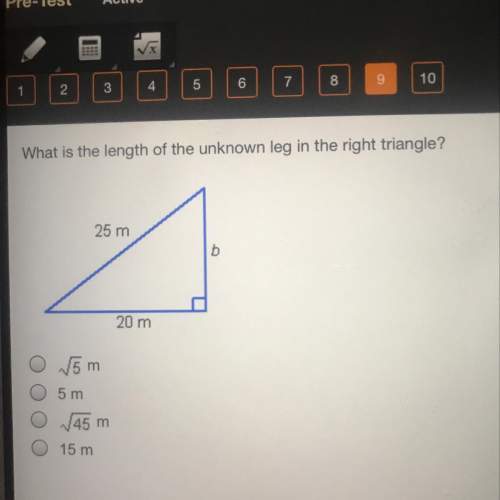
Mathematics, 10.09.2021 18:30, jakobrobinette
{(−3, 2), (−1, 0), (1, 2), (3, 4)} Does the relation pass the vertical line test

Answers: 3
Other questions on the subject: Mathematics


Mathematics, 21.06.2019 21:30, achsahjosey
Acyclist bike x distance at 10 miles per hour .and returns over the same path at 8 miles per hour. what is the cyclist average rate for the round trip in miles per hour ?
Answers: 1

Mathematics, 21.06.2019 21:30, gonzalezashley152
In a test for esp (extrasensory perception), the experimenter looks at cards that are hidden from the subject. each card contains either a star, a circle, a wave, a cross or a square.(five shapes) as the experimenter looks at each of 20 cards in turn, the subject names the shape on the card. when the esp study described above discovers a subject whose performance appears to be better than guessing, the study continues at greater length. the experimenter looks at many cards bearing one of five shapes (star, square, circle, wave, and cross) in an order determined by random numbers. the subject cannot see the experimenter as he looks at each card in turn, in order to avoid any possible nonverbal clues. the answers of a subject who does not have esp should be independent observations, each with probability 1/5 of success. we record 1000 attempts. which of the following assumptions must be met in order to solve this problem? it's reasonable to assume normality 0.8(1000), 0.2(1000)%30 approximately normal 0.8(1000), 0.2(1000)% 10 approximately normal srs it is reasonable to assume the total number of cards is over 10,000 it is reasonable to assume the total number of cards is over 1000
Answers: 1

Mathematics, 21.06.2019 22:30, thelonewolf5020
Amachine that produces a special type of transistor (a component of computers) has a 2% defective rate. the production is considered a random process where each transistor is independent of the others. (a) what is the probability that the 10th transistor produced is the first with a defect? (b) what is the probability that the machine produces no defective transistors in a batch of 100? (c) on average, how many transistors would you expect to be produced before the first with a defect? what is the standard deviation? (d) another machine that also produces transistors has a 5% defective rate where each transistor is produced independent of the others. on average how many transistors would you expect to be produced with this machine before the first with a defect? what is the standard deviation? (e) based on your answers to parts (c) and (d), how does increasing the probability of an event a↵ect the mean and standard deviation of the wait time until success?
Answers: 3
Do you know the correct answer?
{(−3, 2), (−1, 0), (1, 2), (3, 4)} Does the relation pass the vertical line test...
Questions in other subjects:

Physics, 04.06.2021 01:40


Mathematics, 04.06.2021 01:40


Biology, 04.06.2021 01:40

Mathematics, 04.06.2021 01:40

Mathematics, 04.06.2021 01:40









